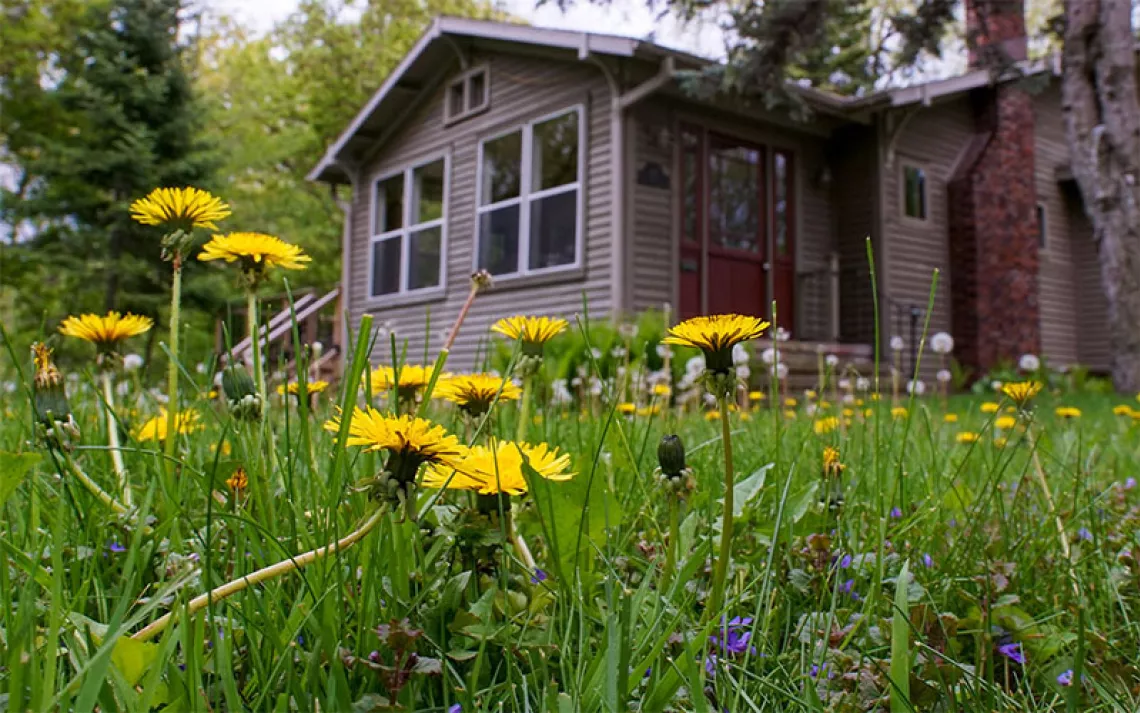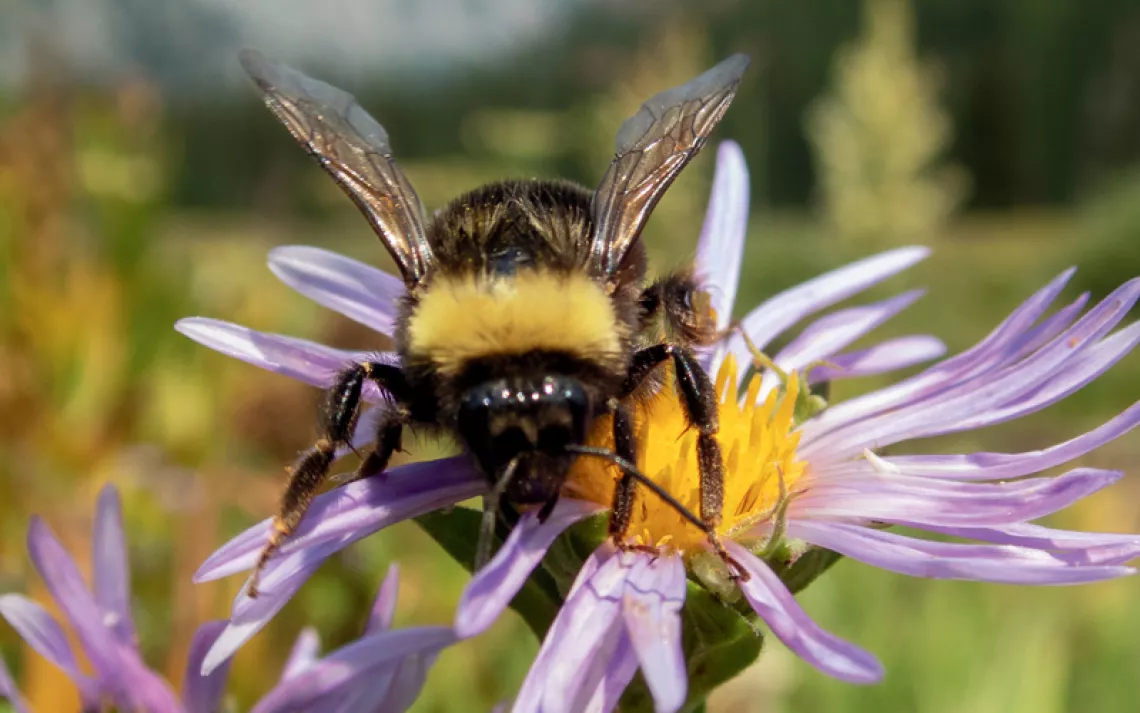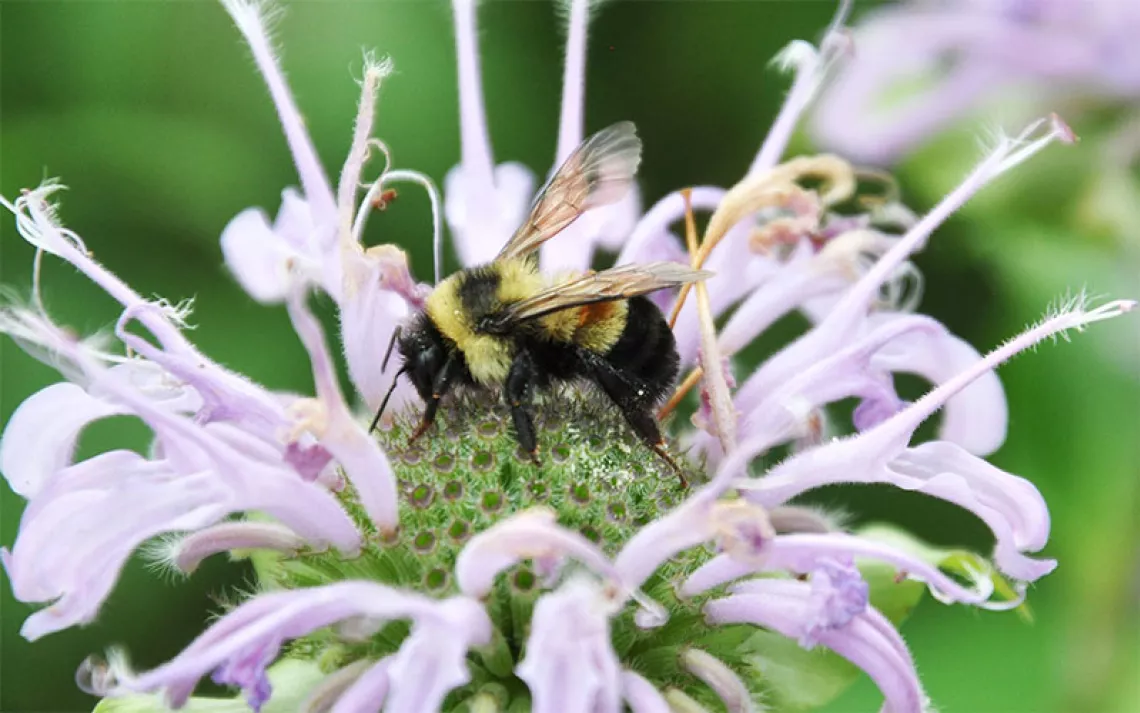Bumblebees Need a Diverse Diet Too
A new study shows the pollen a queen bee eats affects the survival of her nest
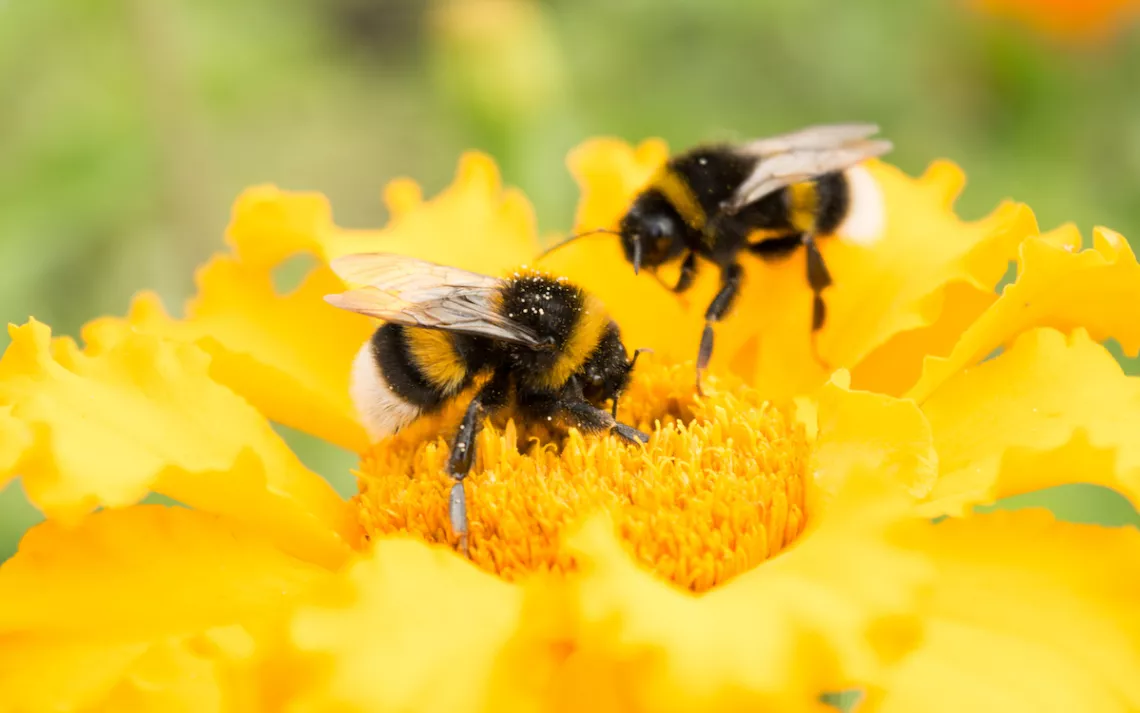
Photo by nnorozoff
Queen honeybees have a pretty cushy life. Living inside the hive, worker bees take care of most tasks like collecting pollen and nectar, producing honey, and fixing up the hive. But that’s not the case for queen bumblebees. For most of their life, the fuzzy, fat, black-and-yellow bees in the genus Bombus fly solo and have to fatten up after hibernation, found a colony, and raise a batch of baby workers before they get a day off. Those weeks as a single mother are perilous for bumblebees, which rely on early-blooming flowers to survive the spring. A new study shows that the more diverse the flowers the queen bees can access, the better off the bees are in the long run.
Unlike queen honeybees, Apis mellifera, which can live for years and overwinter in their hives, the bumblebee life cycle is annual. In the fall, after mating with a male drone, new queen bumblebees dig a cavity in the ground to overwinter. When they emerge in the spring, it’s their job to find a new nest site, which can be a cavity in a tree, a hole in the ground, or even a nice tussock of grass. But searching for real estate is hard work, and the bees need to eat flower pollen for protein and sip nectar for sugar as they go about their business.
When they do set up the colony, they lay their first batch of eggs, sitting on them to keep them cozy while sipping from a little cup of nectar they’ve collected. Once the larvae emerge, the queens need to feed them pollen and nectar until they become worker bees and can take over foraging and nest-building duties. In late summer, the queen produces a brood of new queens and males that disperse from the nest. After mating, those new queens dig cavities to hibernate and begin the cycle all over while the old queen dies off as cold weather sets in.
According to S. Hollis Woodard, a bumblebee researcher at the University of California, Riverside, bumblebee populations around the globe have crashed over the last two decades. While studies blame introduced pathogens, the overuse of pesticides, and habitat loss, Woodard wondered if something was happening during the vulnerable period when the queens live as solitary bees. Most bumblebee queens, researchers believe, never succeed at setting up a nest. Hollis wondered if the quality of their diet could be one factor that could make or break a queen.
To test that idea, Woodard and her team fed 48 Bombus impatiens, or common eastern bumblebee queens, three different pollen diets: one dominated by flowers in the aster family, one dominated by Cistus or rock rose, and one that was primarily Erica, in the heather family. The queens then went on to found colonies in the lab and raise them for eight weeks.
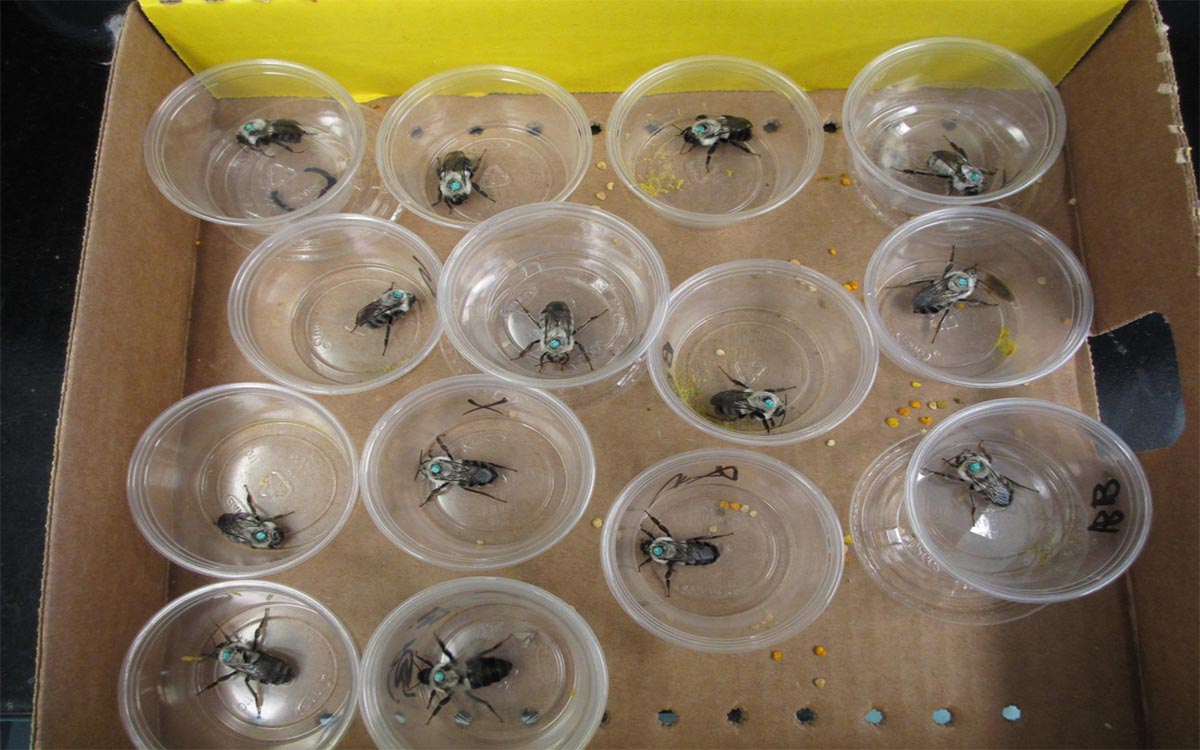
Photo courtesy of the Woodard Lab
The researchers found that the type of pollen the queens ate didn’t impact how many eggs they laid or the timing of when they started to build their nest. But it did impact how quickly the larvae reached adulthood, with some of the larvae, especially those eating heather pollen, developing days behind others. While a few days may seem insignificant, it’s not for the bees. The quicker the queen bee has help, researchers believe, the more likely a nest is to survive, and those few days can determine a colony’s success.
Woodard says that the study is by no means comprehensive and wasn’t intended to search out the perfect food for bumblebee queens. The team fed the queens just three diets though there are thousands of different types of pollen available. Instead, she says the research begins to show that the diet of bumblebees matters. And if habitat changes or the loss of biodiversity lead to a floral monoculture in the spring, it could have effects on nest survival.
“When we don’t give bees options, there could be consequences, and those can be really specific effects on development like in our study,” Woodard says. “But you can imagine how those would scale up to impact the whole population. We think a lot of nests fail in the wild and we know workers help queens. You need to put those two things together and say it’s beneficial to these queens to have broods emerge earlier.”
Keeping bumblebees around isn’t just for the sake of conservation. They are important pollinators for many agricultural crops, including tomatoes, cucumbers, squash, and melons. The various Bombus species are primary pollinators for many native plants. While there’s been a lot of hand-wringing over the last decade about colony collapse disorder and threats to domestic honeybees, bumblebees—which are also economically valuable—are facing similar challenges but without the same attention and resources.
In 2017, the rusty-patched bumblebee, found in the Midwest and Northeast, was the first of 48 bumblebee species in North America to be added to the endangered species list after declining by 87 percent in just 20 years. Other species have suffered similar serious declines and could eventually be listed. California is currently considering a petition to list four bumblebee species in the state as endangered.
It will take a multipronged approach to stop the decline of bumblebees; Woodard hopes that her research will contribute to the effort. She plans to keep studying how pollen diets affect bumblebee development, and eventually, she’d like to develop a list of early-season flowering species that people could plant to help queen bumblebees survive.
“We really want this to go from a lab experiment and turn that into something where we can show people what you plant, especially really early in the season, really matters for queens,” she says, “and can give them a leg up on getting their colonies started.”
 The Magazine of The Sierra Club
The Magazine of The Sierra Club

